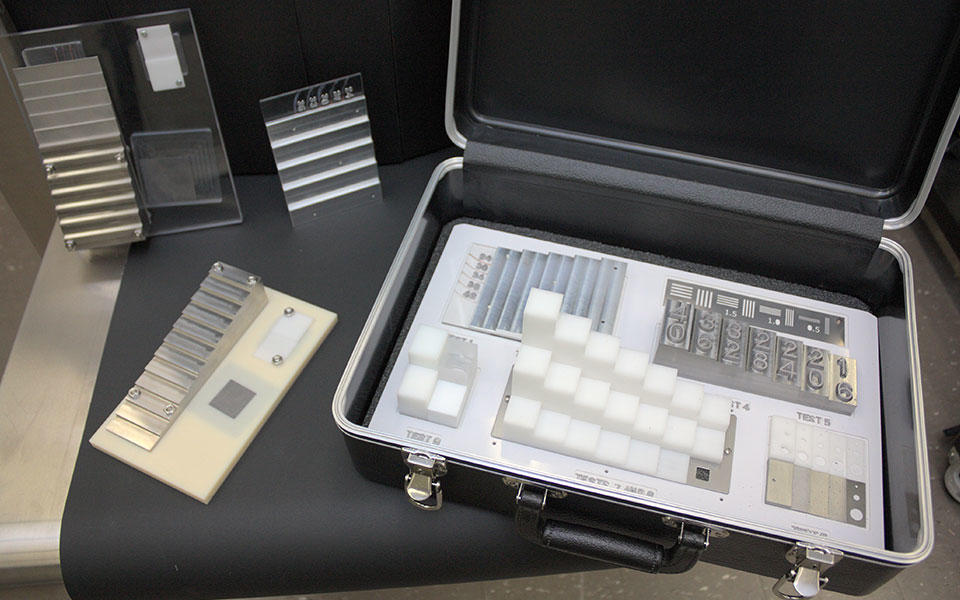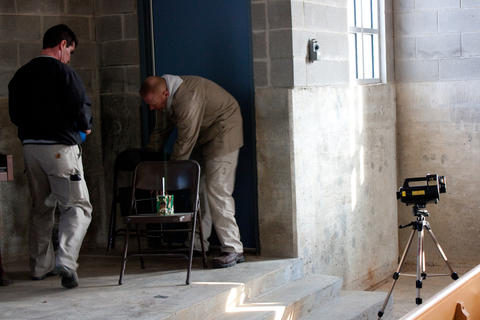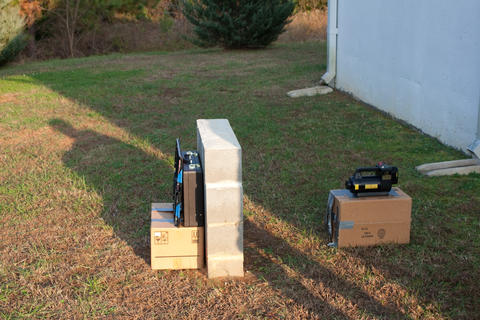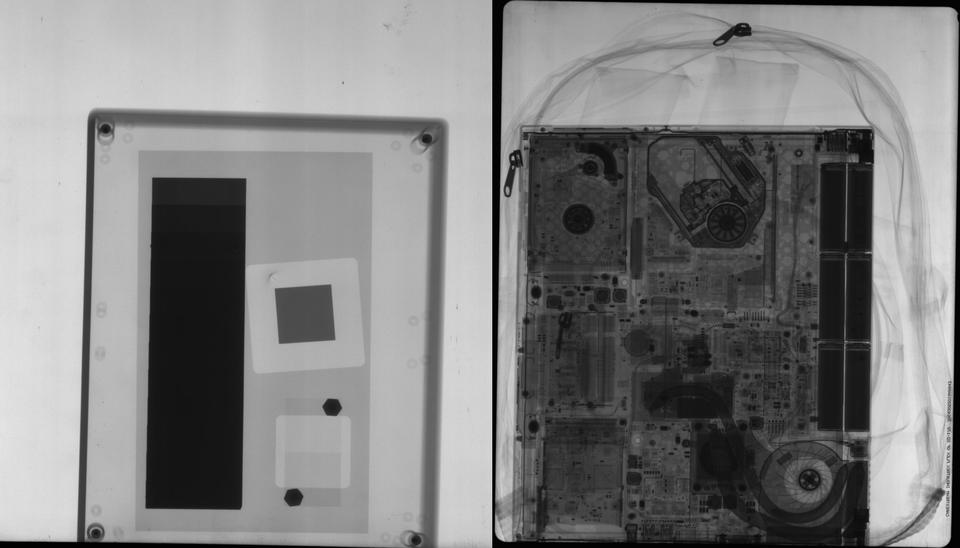Taking Measure
Just a Standard Blog

X-ray test setup for bomb detection. The bomb squad test piece is the one with the yellow plastic base.
I’ve been interested in science ever since I was a child. If you had told 8-year-old me that I was going to be a physicist, then I would have been very excited. Had you told me that my lab would be filled with a bevy of bombs, and that my typical work day might involve blasting those bombs with X-rays, then I would have been thrilled! And the best part is it’s all for a good cause: To help put better equipment in the hands of the nation’s bomb squads so they can keep the public safe.
The goal of public safety bomb squads is to locate explosive devices and render them safe before they can do harm. According to the Bureau of Alcohol, Tobacco, and Firearms (ATF), bomb squads responded to more than 630 explosion-related incidents in 2015 alone.

While NIST’s local bomb squad is part of the Montgomery County Fire Department, most bomb squads are part of federal, state, and local law enforcement agencies. Not every bomb technician is full time, either. Officers in smaller agencies often take on bomb squad duty in addition to their normal law enforcement responsibilities.
When a bomb technician is called out to deal with a suspicious package or a suspected bomb, their first step is often to take an X-ray image of the package to determine whether the package is a threat. The X-ray systems they use must be small, battery powered, and highly portable since explosive devices can be hidden almost anywhere.
When an explosive device is located, the X-ray systems become even more important because the technicians use the X-ray images to understand the design of the device and formulate a plan to disarm it.
My job at NIST is to help ensure bomb technicians have the equipment that suits them best. We do this in two main ways.

First, we develop standards to measure the quality of the images produced by portable X-ray systems. For example, I helped to chair the most recent revision of the American national standard for measuring the image quality of portable X-ray systems.
The standard describes a test object that can be used to characterize an X-ray system using nine distinct image quality metrics. These metrics describe different, important capabilities of an X-ray system, for example, its ability to resolve very small objects or its ability to see through shielding material. The standard allows bomb technicians to independently measure the capabilities of a particular X-ray imaging system, rather than solely relying on the claims of manufacturers.
Second, we directly help the bomb squad community to test their equipment. Just last year, I attended a Department of Homeland Security (DHS)-sponsored X-ray equipment test assessment where active-duty bomb technicians from both military and law enforcement bomb squads put more than 20 different portable X-ray systems to the test. My role was to show the technicians how to use the measurement tools my NIST colleagues and I developed. It was great seeing these tools being used firsthand and meeting the brave men and women whom our work is benefiting.

We also work directly with local bomb technicians to identify which image quality metrics are most valuable to them. We do this by measuring how accurately trained bomb technicians can identify components of mock explosive devices in a series of X-ray images of varying quality. This allows us to quantify the extent to which image quality affects their ability to correctly interpret x-ray images of explosive devices.
I count myself lucky to have a job that is challenging and that I genuinely enjoy. More than that, though, I am grateful to be involved in such important work. It’s easy to find motivation when working in such a deadly serious endeavor, where bomb technicians face danger every day, and where a single mistake can cost lives. I can’t help but be proud of the fact that, in some small way, the work I do helps these heroes do their job—and come home alive.





